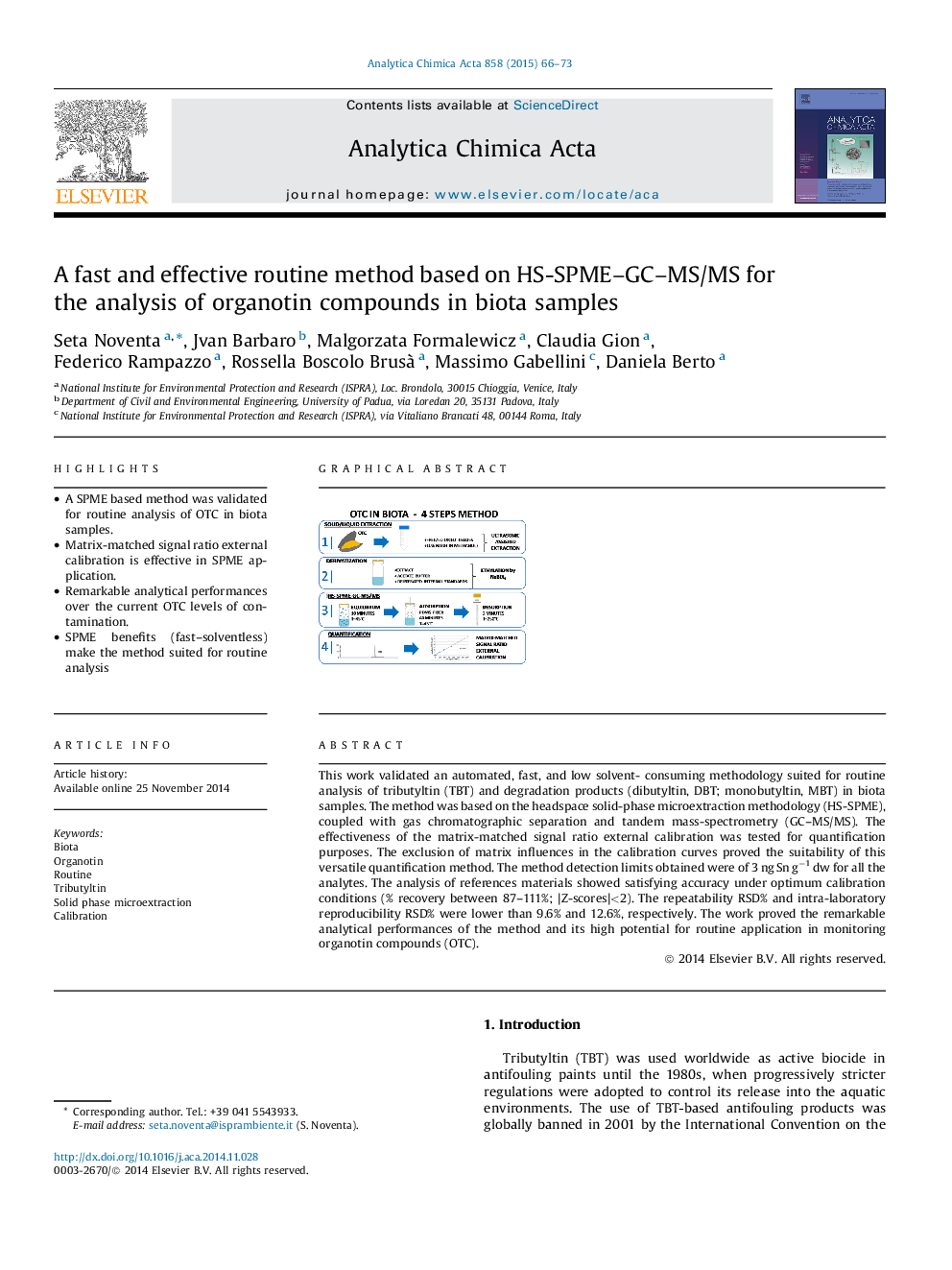| Article ID | Journal | Published Year | Pages | File Type |
|---|---|---|---|---|
| 1164089 | Analytica Chimica Acta | 2015 | 8 Pages |
•A SPME based method was validated for routine analysis of OTC in biota samples.•Matrix-matched signal ratio external calibration is effective in SPME application.•Remarkable analytical performances over the current OTC levels of contamination.•SPME benefits (fast–solventless) make the method suited for routine analysis
This work validated an automated, fast, and low solvent- consuming methodology suited for routine analysis of tributyltin (TBT) and degradation products (dibutyltin, DBT; monobutyltin, MBT) in biota samples. The method was based on the headspace solid-phase microextraction methodology (HS-SPME), coupled with gas chromatographic separation and tandem mass-spectrometry (GC–MS/MS). The effectiveness of the matrix-matched signal ratio external calibration was tested for quantification purposes. The exclusion of matrix influences in the calibration curves proved the suitability of this versatile quantification method. The method detection limits obtained were of 3 ng Sn g−1 dw for all the analytes. The analysis of references materials showed satisfying accuracy under optimum calibration conditions (% recovery between 87–111%; |Z-scores|<2). The repeatability RSD% and intra-laboratory reproducibility RSD% were lower than 9.6% and 12.6%, respectively. The work proved the remarkable analytical performances of the method and its high potential for routine application in monitoring organotin compounds (OTC).
Graphical abstractFigure optionsDownload full-size imageDownload as PowerPoint slide
